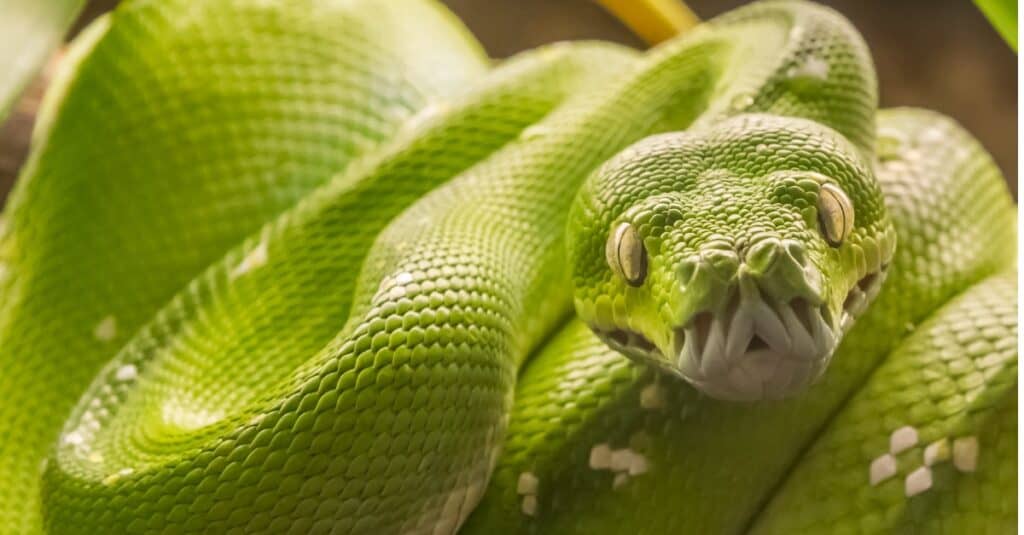Unveiling The Truth: Are Pythons Venomous Snakes?
Pythons are some of the most fascinating creatures in the animal kingdom, often sparking curiosity and even fear among those unfamiliar with them. Many people wonder if these large snakes are venomous and pose a threat to humans. The short answer is no, pythons are not venomous snakes. Instead, they rely on their incredible strength to subdue prey. This misconception stems from a lack of understanding about the differences between venomous and non-venomous snakes. As we delve deeper into this topic, you'll discover the unique characteristics that set pythons apart and why they are not considered dangerous in the same way venomous snakes are.
While pythons are not venomous, they are still powerful predators that can be intimidating to encounter in the wild. Their sheer size and constricting abilities make them formidable hunters, capable of taking down animals much larger than themselves. However, it's important to recognize that these snakes play a crucial role in maintaining ecological balance. Understanding their behavior, habitat, and biology can help dispel myths and promote conservation efforts to protect these incredible creatures.
For snake enthusiasts and nature lovers alike, learning about pythons can be both educational and inspiring. By examining the differences between venomous and non-venomous snakes, we can appreciate the unique adaptations that allow pythons to thrive in various environments around the world. This article will explore the biology, behavior, and ecological importance of pythons, addressing the question, "Are pythons venomous snakes?" and providing valuable insights into these magnificent animals.
Read also:The Diet Plan That Changed My Life A Comprehensive Guide To Transforming Your Health
What Are the Main Characteristics of Pythons?
Pythons are a group of large, non-venomous snakes belonging to the family Pythonidae. They are primarily found in Africa, Asia, and Australia, where they inhabit a variety of environments, from rainforests to grasslands. One of the defining features of pythons is their ability to constrict their prey, using their powerful muscles to suffocate animals before consuming them whole. Unlike venomous snakes, which rely on toxins to immobilize their victims, pythons depend on physical strength and precision to secure their meals.
Another notable characteristic of pythons is their size. Some species, such as the reticulated python, can grow up to 30 feet long, making them one of the largest snakes in the world. Despite their intimidating dimensions, pythons are generally not aggressive toward humans unless provoked or threatened. In fact, many people keep pythons as pets, appreciating their calm demeanor and relatively easy care requirements.
Are Pythons Dangerous to Humans?
Although pythons are not venomous, they can still pose a risk to humans under certain circumstances. Their powerful bodies and ability to constrict make them capable of causing serious injury or even death in rare cases. However, such incidents are extremely uncommon, as pythons typically avoid human contact and prefer to hunt smaller animals like rodents, birds, and reptiles. Most encounters between humans and pythons occur when people invade the snakes' natural habitats or attempt to handle them improperly.
To minimize the risk of harm, it's essential to respect pythons' space and avoid provoking them. If you come across a python in the wild, maintain a safe distance and observe it from afar. Remember that these snakes play an important role in controlling pest populations, and their presence is often beneficial to ecosystems.
How Do Pythons Differ From Venomous Snakes?
The primary difference between pythons and venomous snakes lies in their hunting methods. Venomous snakes use specialized glands to produce toxic substances that they inject into their prey through hollow fangs. These toxins can cause paralysis, tissue damage, or even death, depending on the species. In contrast, pythons lack venom and instead rely on their muscular bodies to constrict and suffocate their prey.
Another distinction is the presence of heat-sensing pits in some venomous snakes, such as vipers and pit vipers. These pits allow them to detect warm-blooded prey in complete darkness. Pythons, on the other hand, rely on their keen sense of smell and tactile sensitivity to locate and capture food. Understanding these differences helps clarify why pythons are not considered venomous and highlights the diverse strategies employed by snakes to survive in their respective environments.
Read also:Understanding The Paris Drinking Age Rules Culture And Faqs
Why Do Some People Believe That Pythons Are Venomous Snakes?
Misconceptions about pythons often arise from a lack of knowledge about snake biology and behavior. Many people assume that all large snakes are dangerous and capable of delivering venomous bites. Additionally, media portrayals of snakes as aggressive predators can reinforce these misunderstandings. In reality, pythons are far less threatening than venomous snakes and rarely pose a significant risk to humans.
Educating the public about the differences between venomous and non-venomous snakes is crucial for reducing fear and promoting coexistence. By learning about the unique characteristics of pythons, we can appreciate their role in nature and work to protect them from habitat destruction and other threats.
What Are the Different Types of Pythons?
There are several species of pythons, each with its own set of characteristics and adaptations. Some of the most well-known types include:
- Ball Python
- Reticulated Python
- Burmese Python
- Carpet Python
- Green Tree Python
Each species has distinct physical traits, such as color patterns, size, and preferred habitats. For example, the ball python is a smaller, more docile species commonly kept as a pet, while the reticulated python is the longest snake in the world and inhabits tropical rainforests. Understanding the diversity of pythons can deepen our appreciation for these remarkable creatures and their contributions to biodiversity.
Are Pythons Suitable as Pets?
Many people are drawn to pythons as exotic pets due to their calm nature and manageable care requirements. However, keeping a python as a pet requires careful consideration and commitment. These snakes need spacious enclosures, appropriate temperature and humidity levels, and a diet of appropriately sized prey. Additionally, potential owners should research local regulations regarding the ownership of exotic animals, as some areas have strict laws governing the keeping of pythons.
Before deciding to acquire a python, it's important to evaluate your ability to meet the snake's needs and provide a suitable environment for its entire lifespan. Pythons can live for 20 years or more, so this is a long-term commitment that should not be taken lightly.
What Is the Role of Pythons in Ecosystems?
Pythons play a vital role in maintaining ecological balance by controlling populations of small mammals, birds, and other animals. As apex predators, they help prevent overpopulation of prey species, which can lead to habitat degradation and resource depletion. In addition, pythons contribute to nutrient cycling by breaking down organic matter and enriching the soil.
Conservation efforts are essential to protect pythons and their habitats from human activities such as deforestation, urbanization, and illegal wildlife trade. By supporting organizations dedicated to snake conservation and raising awareness about the importance of these animals, we can ensure the survival of pythons and the ecosystems they inhabit.
Why Is It Important to Understand "Are Pythons Venomous Snakes"?
Gaining a deeper understanding of pythons and their place in the animal kingdom can foster greater respect and appreciation for these fascinating creatures. By dispelling myths and misconceptions, we can reduce fear and promote coexistence between humans and pythons. Furthermore, recognizing the differences between venomous and non-venomous snakes is crucial for identifying potential dangers and taking appropriate precautions when encountering snakes in the wild.
Education and awareness are key to protecting pythons and their habitats, as well as ensuring the safety of people who live in areas where these snakes are present. Through research, advocacy, and responsible wildlife management, we can create a world where humans and pythons can thrive together.
What Can We Learn From Studying Pythons?
Studying pythons offers valuable insights into the biology, behavior, and evolution of snakes. Researchers can explore topics such as genetic diversity, reproductive strategies, and ecological interactions to better understand these animals and their role in ecosystems. Additionally, observing pythons in captivity and the wild provides opportunities to learn about their unique adaptations and survival techniques.
By advancing our knowledge of pythons, we can develop more effective conservation strategies and address the challenges facing these snakes in an increasingly human-dominated world. Ultimately, the study of pythons enriches our understanding of the natural world and highlights the importance of preserving biodiversity for future generations.
Conclusion: Embracing the Truth About Pythons
Pythons are incredible creatures that captivate the imagination with their size, strength, and beauty. While the question "are pythons venomous snakes" may seem straightforward, exploring this topic reveals the complexity and diversity of these snakes and their place in the animal kingdom. By embracing the truth about pythons and promoting education and conservation, we can ensure that these magnificent animals continue to thrive for generations to come.
Table of Contents
- Unveiling the Truth: Are Pythons Venomous Snakes?
- What Are the Main Characteristics of Pythons?
- Are Pythons Dangerous to Humans?
- How Do Pythons Differ From Venomous Snakes?
- Why Do Some People Believe That Pythons Are Venomous Snakes?
- What Are the Different Types of Pythons?
- Are Pythons Suitable as Pets?
- What Is the Role of Pythons in Ecosystems?
- Why Is It Important to Understand "Are Pythons Venomous Snakes"?
- What Can We Learn From Studying Pythons?


